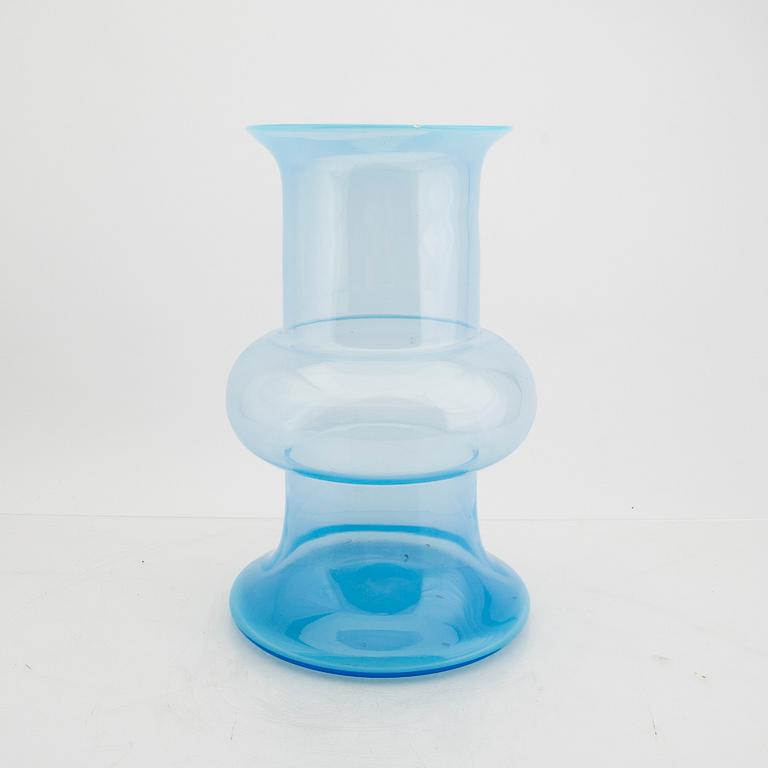Signe Persson-Melin
Signe Persson-Melin, a "Boda blom" glass vase 1970s from Boda
Height 35 cm
Insignificant wear. Scratches.
Provenance
Signe Persson-Melin
More information
"When Boda Blom was introduced to the market in the early 70s, the leaflets that came with the vases said 'Vases that speak the language of flowers'. It also came with tips on how to make cut flowers last longer.
Boda Blom was created in collaboration between Signe Persson-Melin and Ulla Molin, garden expert. They had decided to create the optimal vase for flowers. First, three narrow and three wide vases in clear glass were presented. Gradually, there were more vases in different sizes, including tiny vases. These small vases, Signe has told me, are intended for the children's different bouquets with short stems that you can be presented with. The vases came with a thin transparent plastic sheet with holes in it that would make it easier to arrange the flowers neatly. In the middle of the vases there is a strong bead which is intended to give you a good grip on the vase when you lift it", from Precis en sån/retroblog
Designer
The designer Signe Persson-Melin (1925-2022) began her career with an internship at Lomma Ler och Keramik, which produced flower pots. This was followed by education both at Konstfack in Stockholm and the Kunsthandvaerkerskolen in Copenhagen. Her debut exhibition at Galleri Moderne in Stockholm in 1953 was a great success with the critics as she was hailed as a newly discovered talent. At the H55 exhibition in Helsingborg 1955, she became known to a wide audience for her spice jars in white-glazed ceramics. Through the many years that followed, she created many design classics in glass, clay and metal. As a designer of glass, she came to renew the set table in the early 1970s. Signe began a collaboration with Byarums Bruk around 2008, where her first work was the planters in the 'Gråsippa' series. It was a successful collaboration with many appreciated products that continued until her death in 2022.
Signe Persson-Melin had her own workshop in Malmö 1950-66, was associated with Höganäs-Keramik 1967-78 and Rörstrand 1978-85. As a professor at Konstfack, she was active in 1985-90 and 1993-95. She worked with chamotte stoneware and became one of the main representatives of a new rustic ware. She has drawn stoneware teapots and several series of tableware. Since 1953, she has set up several solo and collective exhibitions and created a number of public decorations.
Read more





































